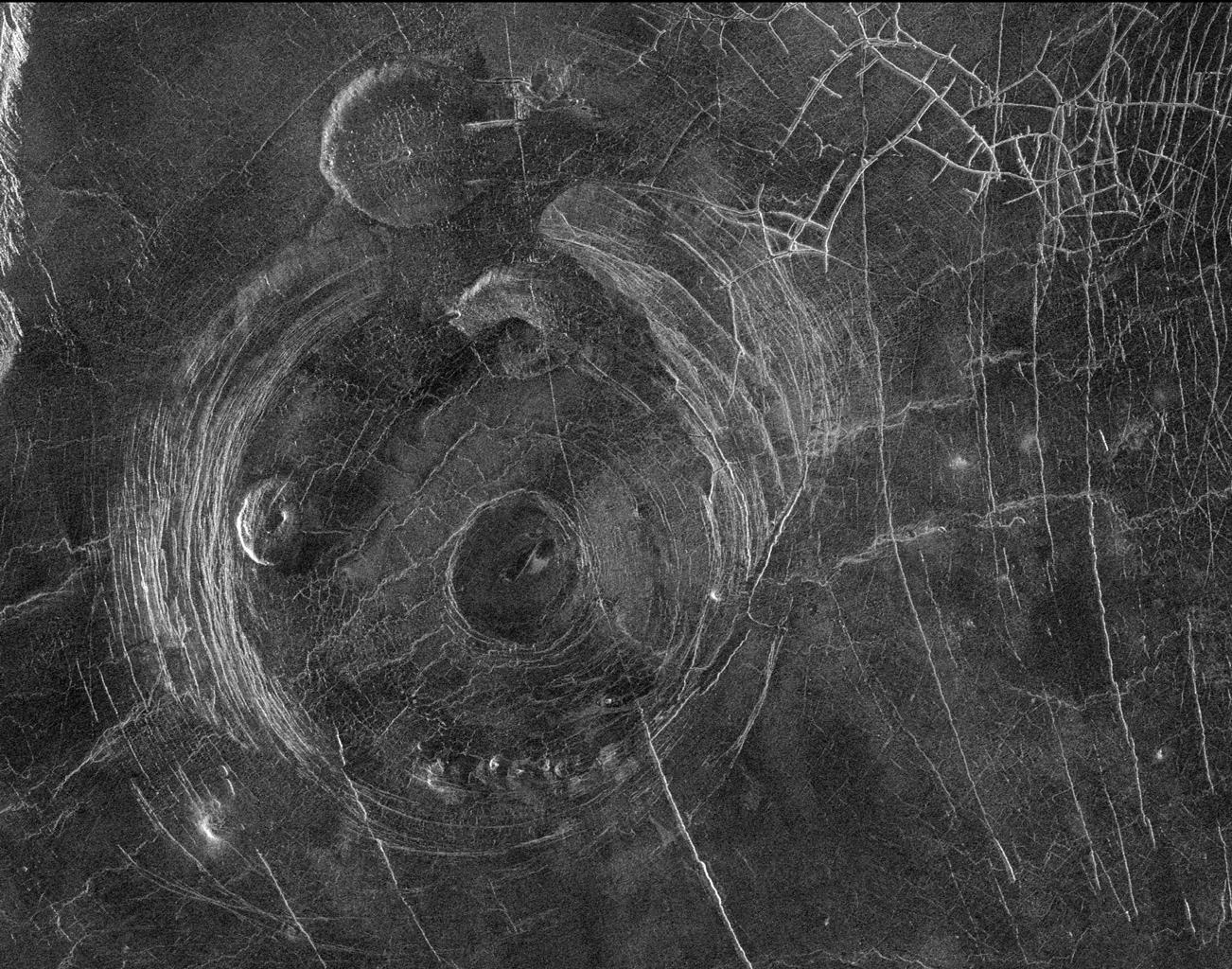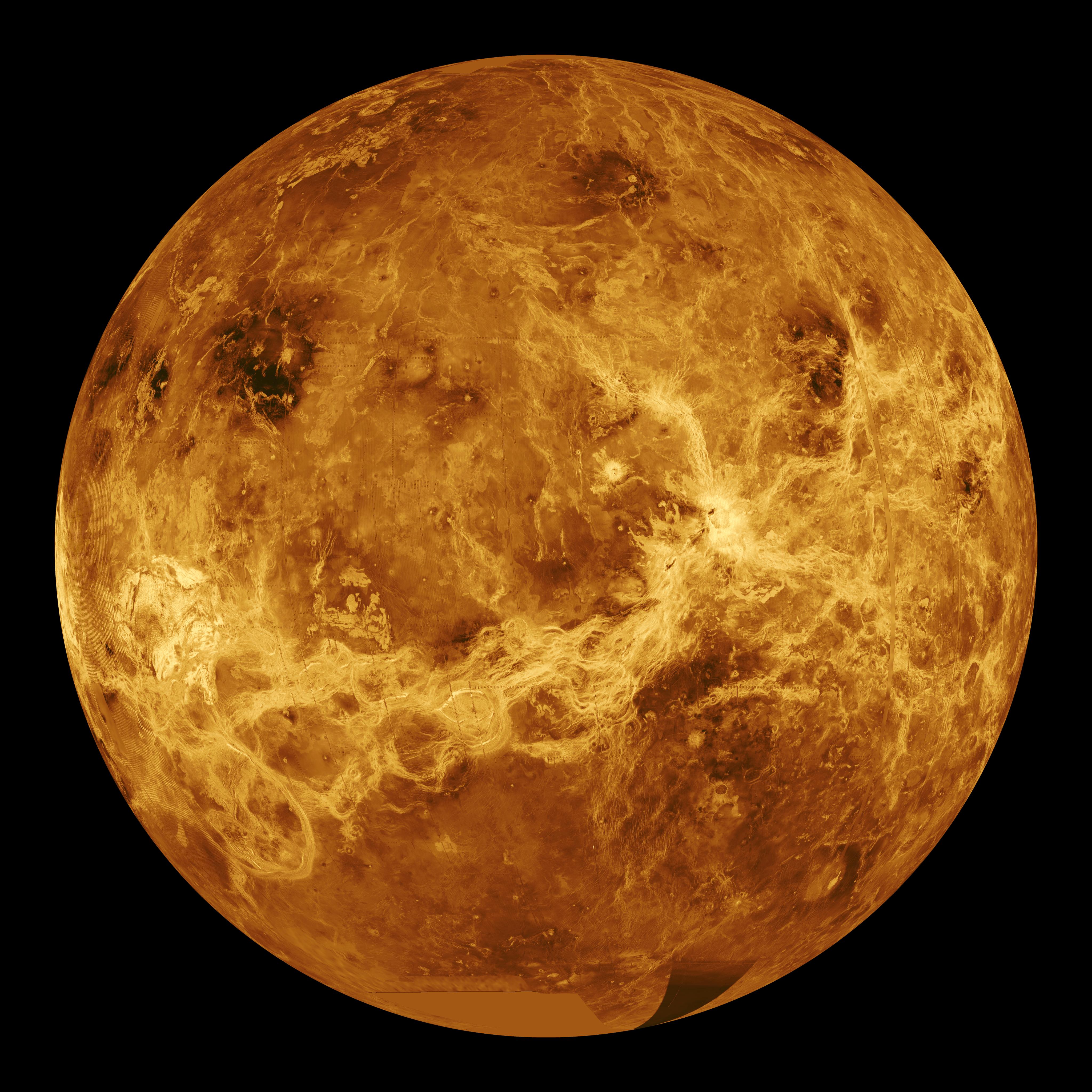Mysteries of Crown-like Structures on Venus' Surface Unveiled in New Study

On Venus, plumes of superheated rock from near the planet's core may rise up intermittently, destroy patches of the planet's surface and create unique crown-shaped geologic features called coronae, a new study finds.
The new study suggests that the surface of Venus is more active than scientists previously thought, and the findings could shed light on how the early Earth evolved, the researchers said.
In terms of size, mass, distance and chemical makeup, Venus is the most similar planet to Earth in our solar system. But whereas Earth's environment is hospitable to a vast array of life-forms, Venus is typically described as hellish; its crushing atmosphere holds corrosive sulfuric-acid clouds over a rocky desert surface hot enough to melt lead. [Photos: Venus, the Mysterious Planet Next Door]
"Understanding how these twin planets diverged down different paths is essential for understanding how rocky planets evolve," said Anne Davaille, a physicist at the University of Paris-Saclay and lead author of the paper describing the new research.
Another way Venus differs from Earth is that Earth has long experienced a phenomenon called plate tectonics, in which surface plates constantly shift over the underlying mantle layer. This activity is responsible for the changing position of Earth's continents over time, and it is the major driver of earthquakes and volcanoes on the planet's surface.
In contrast, previous research suggested that the surface of Venus has largely remained stagnant for the past 300 million to 600 million years. Prior work suggested that Venus does not experience plate tectonics because its surface is hotter, and therefore softer, than Earth's, thus preventing it from becoming rigid enough to break up into plates.

However, previous research also found that the surface of Venus has quasi-circular structures known as coronae. These features consist of a round central region, often surrounded by cracks in the surface or streaks stretching out from the center, creating a feature that looks like a crown from above. These coronae "appear to be unique to Venus," Fabio Crameri, a researcher at the Centre for Earth Evolution and Dynamics at the University of Oslo in Norway, wrote in a commentary accompanying the study published online April 10 in the journal Nature Geoscience. The round shape of these coronae suggested that they formed because of pillars of hot rock ascending up from underneath them, but trenches seen around them also indicated that rock was sinking beneath their upraised rims.
Get the Space.com Newsletter
Breaking space news, the latest updates on rocket launches, skywatching events and more!
Now, laboratory experiments simulating Venus support the idea that plumes of hot rock ascending up the planet's mantle layer could help explain these coronae. These findings hint that the surface of Venus is not as stagnant as scientists previously thought.
In the experiments, glass tanks were filled with fluids loaded with particles of silica, the same material from which sand and glass are usually made. They dried these fluids from above to simulate the way the Venusian surface cooled and hardened over time, and heated these fluids from below to simulate the way the planet's hot interior would cause rock to circulate.
These experiments suggested that on Venus, mushroom-shaped plumes of hot rock rising up from the mantle can rest under patches of the Venusian surface, the researchers said. Similar "mantle plumes" are seen on Earth.
In these experiments, the simulated mantle plumes could fracture the mostly rigid surface. Material from the plumes could well up through the fractures as magma, according to the study.
At the same time, slabs of surface rock could dip, or subduct, under the rims of the larger patches of rock sitting on top of the pillars — a process the scientists called "plume-induced subduction."
"The process of plume-induced subduction may be one of the localized processes that resurfaces Venus in a steady, ongoing manner," Davaille told Space.com.
All in all, these simulations match available data from the Venusian surface, such as findings regarding the Artemis and Quetzalpetlatl coronae on Venus, the researchers said. Although the surface of Venus may be largely old and stagnant, patches of it regularly get destroyed by forces emanating from below the surface, they added.
Similar activity might have occurred on the early Earth, back when its surface was hotter and softer, the scientists noted.
"What we see on Venus today may be very similar to an earlier phase on Earth," Davaille said. "Studying these processes on Venus sheds light on the conditions needed for planets to develop plate tectonics, and may shed light on our origins."
Davaille said she and her colleagues are now proposing a new mission to NASA to better investigate Venus and learn more about its geology.
The scientists detailed their findings online April 10 in the journal Nature Geoscience.
Follow Charles Q. Choi on Twitter @cqchoi. Follow us @Spacedotcom, Facebook and Google+. Original article on Space.com.
Join our Space Forums to keep talking space on the latest missions, night sky and more! And if you have a news tip, correction or comment, let us know at: community@space.com.

Charles Q. Choi is a contributing writer for Space.com and Live Science. He covers all things human origins and astronomy as well as physics, animals and general science topics. Charles has a Master of Arts degree from the University of Missouri-Columbia, School of Journalism and a Bachelor of Arts degree from the University of South Florida. Charles has visited every continent on Earth, drinking rancid yak butter tea in Lhasa, snorkeling with sea lions in the Galapagos and even climbing an iceberg in Antarctica. Visit him at http://www.sciwriter.us









